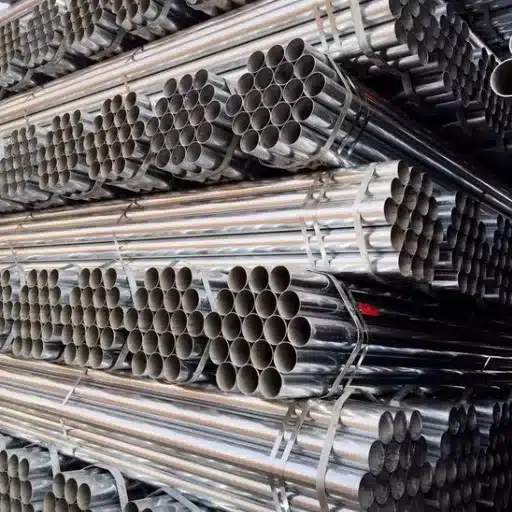Metals are vital for the construction, manufacturing, technology, and art industries, which rely on them. The suitability of metals for a given task is defined by their melting points, and understanding how melting points can impact the effectiveness of welding, casting, and alloy production is essential in performing these procedures. The aim of this guide is to explain and break down all the relevant aspects that the melting points of metals can prove to be helpful, along with the factors that influence the melting points. Professional or not, this article provides deep insights into the distinct traits of metals.
What is the Melting Point of a Metal?
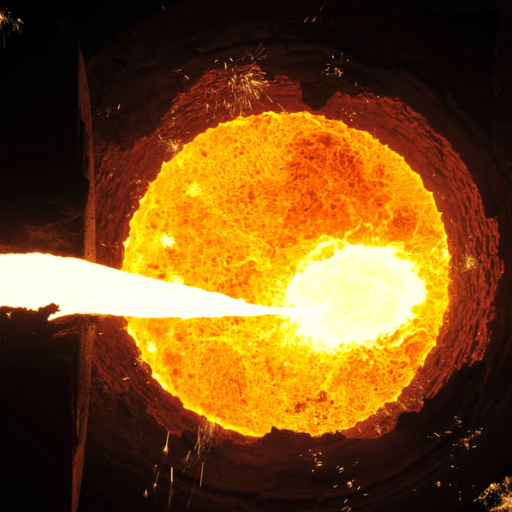
A metal’s melting point is the temperature at which it changes from a solid to a liquid state under normal atmospheric pressure. The melting temperature will differ based on the type of metal and its molecular structure, pure metals have defined melting points but alloys tend to melt over a range of temperatures due to their mixed compounds.
Understanding the Melting Point of Metal
Looking at the various components, the melting point of a given metal is one of the more vital features to understand if one is increasing or shifting material in any section. It is not simply a number; it also literally tells one what kind of work a metal can undertake, for instance, what type of heat it can take in industrial use of processes. To give an example, certain metals, for example, tungsten, have a very high melting point and can be used in extreme heat applications. On the other end of the spectrum, metals such as lead, with low melting points, are favored for soldering. Understanding these principles allows engineers, manufacturers, and designers to make fuel and effective devices.
How do Metals Transform from a Solid to a Liquid?
Highly blustering metals undergo a transformation of state in relation to their temperature when by reach their melting point. Heating metals with compact atomic formation makes them go from a solid to a liquid state, and by heating, energy is injected into the system. When it reaches the melting point, the metal’s internal structure changes in the form of a phase transition. Loose energetic atoms can overpass inflexible structures during this stage, which allows these atoms to become more flowing, so to speak. The melting point of a metal varies depending on the atomic composition, which determines its structure and different attributes.
Factors Affecting Metal’s Melting Point
In my considerations of the factors impacting a metal’s melting point, the first thing I analyze is the atomic structure and bonding of the metal. The strongest metallic bonds usually correspond to a higher melting point, which is the result of greater free electron density and smaller atomic radii. Take tungsten, for example. Due to its incredible atomic bonding and density, it has an exceedingly high melting point. Also, the addition of certain impurities or alloying elements tends to change the melting point greatly. The addition of carbon to iron to make steel is a classic example where the thermal properties of the resulting alloy are changed profoundly. With these understandings, we are able to design alloys of metals intended for specific industrial applications efficiently.
Why Do Metals Have Different Melting Points?
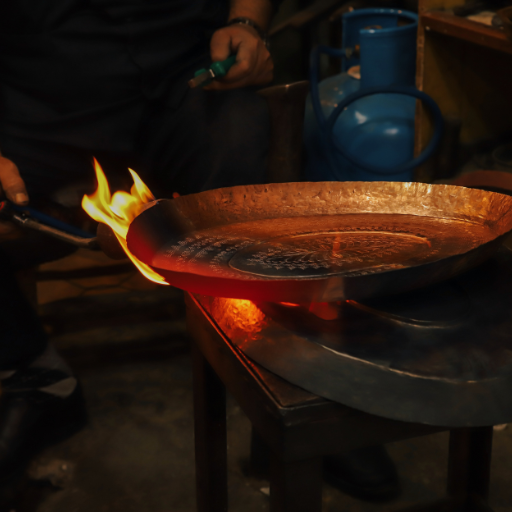
The differences in atomic structure, electron configuration, and bonding explain the different melting points for metals. Metals with strong metallic bonds, like tungsten, and more tightly packed atomic arrangements have higher melting points. On the other hand, metals with weaker bonds or less dense structures, like lead, have lower melting points. Such differences allow for the selection of specific metals that are suitable for applications that demand accuracy in thermal performance.
The Role of Alloy Composition in Melting Points
As to the impact of melting points on alloy composition, I can state with certainty that this is an interesting and very important subject in metallurgy. Alloys are, in essence, blends of two or more elements, often metals, and their properties, including melting points, are the result of the specific elements or components involved and their relations. Let me enumerate some of the most significant parameters as follows:
- Type of Elements in the Alloy: An alloy’s elements dramatically influence its melting temperature. Some metals, such as tungsten, have high melting temperatures, while others, like tin, have much lower ones. The alloy’s overall melting point is a function of the total concentration of these metals.
- Atomic Sizes and Structures: The atoms of metals that have very different atomic sizes tend to interfere with the orderly structure of the metal lattice. This is largely responsible for an alloy’s lower melting point because the greater the lattice distortions in atomic arrangements, the easier it is to break the structure during heating.
- Phase Composition and Microstructure: Distinct melting points may exist within certain submicrostructures of an alloy. Those with eutectic compositions are able to melt at one sharp temperature, and that temperature is typically lower than that of the various constituent elements of the alloy.
- Proportions of Base Metals vs. Additives: The ratio of primary base metals to additive elements or impurities has direct effect on the melting behavior. For example, even in minute proportions, low melting metals such as lead, when added to a melting point increasing metal, can lower the melting point much more than would be expected.
- Chemical Bonding and Interaction: The bonds that the chemical elements form within an alloy also plays a role. When different metals are bonded together, the greater the metallic or covalent bond is, the higher the melting point is likely to be, whereas, lower bonds may result to lower melting points.
This set of parameters helps me alongside other engineers and metallurgists design alloys with certain specifications. For example, solders need alloys that have low melting points for easy usage, and aerospace alloys require higher melting points due to extreme temperatures. The capacity to tailor the thermal specification with specific alloys makes them extremely useful across different industries.
Impact of Thermal Expansion on Metal Melting
The role of thermal expansion when it comes to the behavior of metals as they near their melting points is of utmost importance. The process of heating a material causes it to expand, and the atomic cores bond in a manner that weakens the structure, which facilitates the change from solid to liquid. In my opinion, having knowledge related to the expansion properties of a certain metal or alloy enables us to anticipate its performance by applying thermal stress. An example of this would be that components of aerospace machinery undergo extreme levels of heat, but the materials must also possess stability when it comes to thermal expansion. It is possible to restrict alloy compositions and adjust their properties to achieve minimum unwanted thermal expansion while maximizing the increase of performance in critical applications. In order to withstand extreme conditions, this comprehension becomes vital in the process of designing certain materials.
Comparing Common Metals and Their Melting Points
Different metals have different melting points, which determine their applications. For example, Aluminum is melted at around 660°C, and as such, it is useful in areas that need lightweight and heat-resistant materials. Steel is much stronger than Aluminium, so it is better suited for structural and high-strength requirements. Because it is an alloy, steel has different composition variants, which gives it a melting point range of 1370-1510°C. The melting point of titanium is 1668°C, so it is best used in aerospace and medical industries due to its durability and resistance to heat. Copper has a melting point of around 1085°C, so it can be easily used in wiring because of its high conductivity. Knowing the different melting points enables engineers to select the right metal depending on the mechanism and thermal requirements.
Exploring the Melting Points of Common Metals

Industries vary greatly in their functionality and handling of metals. Different metals are utilized for distinct uses and operations based on their usability. Every common metal has specific melting points, and knowing them aids in applying metal in the right area. With the significant properties that vary owing to the melting points of aluminum, titanium, and copper, which remain in the melting temperature range, they can be used for specialized overseas construction, electrical medicine, and aerospace work. Guided by these limits, design engineers can tailor and preserve the expected service value in their products, working on well-defined problems for some industry.
Melting Points of Popular Metals
In my work as an industry expert, knowing the melting points of metals is quite pivotal. For example, aluminum is crucial in the aerospace and automotive industries due to its low density, resistance to corrosion, and lightweight nature, with a melting point of around 660°C (1220°F). Likewise, Titanium completely dominates in biocompatibility with a remarkable strength-to-weight ratio, making it useful for medical implants and even in high-performance applications, like jet engines, where it melts around 1668°C (3034°F). Also, copper is known for its thermal and electrical conductivity, along with a melting point of roughly 1085°C (1984°F). Ti is extensively used in the aerospace sector, while copper is crucial in thermal and electrical industries, thus guiding the selection of materials to be durable and efficiently built for an industry’s specific needs.
Understanding Refractory Metals and Their High Melting Points
Wolfram, molybdenum, tantalum, and niobium are considered highly resistant metals of exceptionally high melting points. They are extensively used in sophisticated industries like aerospace, defense, and power generation, where components must work under extreme temperatures and stress. Their high thermal conductivity, along with resistance to deformation and wear , guarantees efficiency and service life in the industry’s most critical applications. Refractory metals provide an attractive approach to industry challenges in harsh environments providing superior performance.
What is the Lowest Melting Point Among Metals?
I know for a fact that the metal with the lowest melting point is mercury. This is because mercury’s melting point is at an astonishing -38.83°C (-37.89°F). This allows it to remain a liquid even at room temperature. Because of this distinctive feature, mercury has proven to be useful in thermometers, barometers, and other scientific tools. Despite these advantages, mercury’s toxicity makes it difficult to work with and limits its use in modern industries, which is why non-poisonous alternatives are commonly used.
How Does Alloy Composition Affect Melting Points?
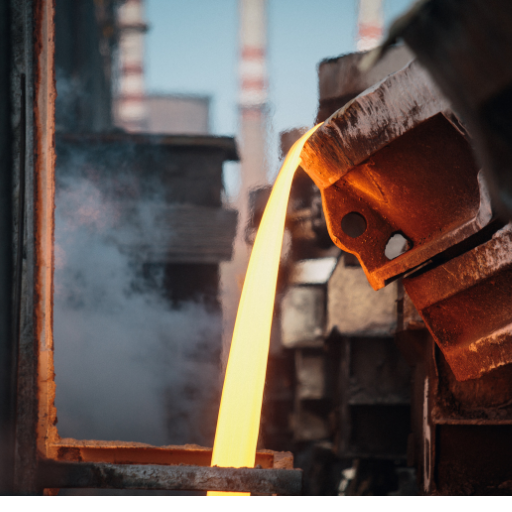
Alloy composition has a considerable impact on melting points as the alloys are influenced by how different metals behave at the atomic level. As an industry expert, I can explain that the melting point of the base metals and the way they crystallize are very important when they are mixed together to form alloys. A good example is adding low-melting tin or lead to high-melting base metal copper, which will decrease the melting point of the alloy. Also, the ratio of different contaminants may result in eutectic mixtures, which have remarkable melting characteristics of certain alloys. This ability to customize such features increases the scope of application of alloys in manufacturing, aerospace, electronics, etc.
How Alloys Lower the Melting Point of Metals
The creation of alloys, which consist of two or more metals, helps decrease the metal’s melting point. Combining elements results in a mixed atom structure which is very different from a pure metal’s structure. This results in a disruption against the orderly arrangement of atoms which results in the minimum energy or heat required for atoms to shift from solid state into liquid state to reduce.
To corroborate my statement, this is a list of the most prominent factors that contribute to this event:
- Atomic Size Difference: The incorporation of elements with differing atomic sizes leads to a break in the uniform structure which weakens metallic bonds. This break in uniformity causes less energy to be expended when bonds are to be broken which leads to a reduction in the melting point.
- Proportions of Elements: The atomic interactions and therefore the melting behavior depends on how the elements are combined. For example, certain elements which are more reactive in nature and whose addition is small, however their effects are profound with regards to melting behavior.
- Type of Elements Mixed: Some elements form metallic bonds far more easier than they are broken whereas some other elements tend to break bonds that are already present. Solder is an example of an alloy made by mixing tin and lead where the application of tin reduces the melting point of the lead.
- Phase Formation: Alloys are known to have more than one microstructure composition within a single macroscopic sample. These microstructures may have different melting points, thus, the alloy’s melting point is an average of many microstructures which makeup the alloy as well as the complexity of multi phases present in the alloy.
Industries can custom-design melting points for low-melting-point solder and improve metal manufacturability by tailoring proportions of alloy elements for a specific application.
Understanding High-Temperature Alloys
Extreme temperature superalloys serve as the backbone for many industries that require sustained elevated temperatures, such as aerospace, power generation, and automotive, as components in these sectors undergo severe thermal conditions, which these materials can resist whilst delivering reliable performance and strength. Superalloys are profoundly composed of nickel, cobalt, and iron metals, integrated with chromium and molybdenum elements that provide ample oxidation or corrosion resistance as well as durability.
Why Some Alloys Have Higher Melting Points?
As a professional in the industry, I understand that certain alloys possess higher melting points because of their engineered composition, as well as the stronger atomic bonding present. Alloys of tungsten, molybdenum, and chromium are often added to these alloys due to their respective high melting temperatures. Furthermore, the particular configuration of atoms within an alloy’s crystalline structure contributes positively to thermal stability. These alloy properties are particularly important in fields requiring materials to withstand high temperatures without deterioration, including aerospace and power generation.
What Are Some Applications of Metal Melting Points?
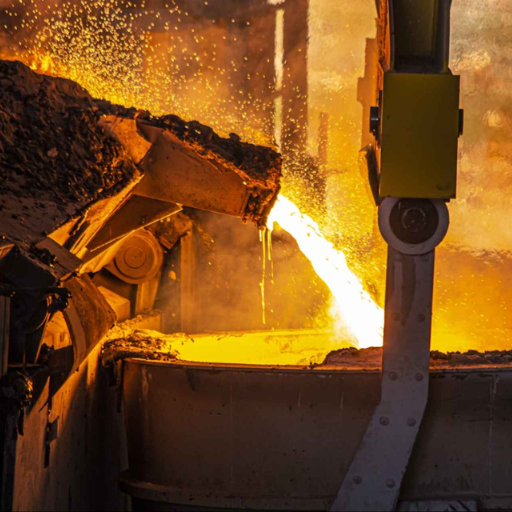
The importance of metal melting points is critical in many fields. For example, in aerospace engineering, it is necessary to use materials with high melting points while fabricating turbine blades and rockets for aerospace-grade turbines. Equally important in power generation is the use of such materials when designing and constructing boilers and industrial furnaces. Furthermore, in electronics, knowing precisely the melting points of metals guarantees strong bonds when soldering and enables fabrication components that are heat-resistant. These considerations highlight the need for an appropriate metal suited for extreme temperatures.
Significance of Metal Melting in Industrial Processes
Drawing from my experience working in the industry, knowing the melting points of metals is important for optimizing processes. Selecting a suitable metal for high-temperature components in aerospace, power generation, and manufacturing goes beyond just metal strength; it concerns safety and efficient operations. For example, precision must be matched with discipline in material selection and process control to create turbine blades that can endure severe thermal conditions without deformation. Likewise, proper soldering in electronics manufacturing depends on metals that have a predictable melting point so solid connections can be made. Understanding these characteristics enables industries to innovate while meeting the stringent reliability demands today.
Applications in Welding and Fabrication
Knowing important information about a material’s strength, thermal conductivity, and malleability is crucial in welding and fabrication processes. These characteristics dictate the methods, filler materials, and safety protocols that should be executed in order to achieve accurate and durable joints. An example would be a selection of appropriate welding methods, like TIG or MIG processes. The decided method to be used is dependent on these factors – the materials to be joined and the intended functionality of the resulting product. Comprehending these components aids in accomplishing desired results, minimizing waste, and meeting quality standards.
The Role of Melting Temperatures in Material Science
Drawing from my professional experience, knowing how to melt materials is crucial in attaining success within the confines of material science and engineering. The point of change from a solid to a liquid dictates how we process, shape or join different components. In the case of alloys, having data on precise melting temperatures ensures that production does not suffer from inconsistencies or structural weaknesses. Understanding the commercial recourses enhances efficiency, but very significantly improves the performance and durability of the product.
Reference
- Industrial Metal Supply: Melting Points for Metals – A detailed guide on the melting points of various metals and alloys.
- OnlineMetals.com: Melting Points of Metals – Provides specific melting point ranges for copper alloys, brass, and more.
- JIAHUI Blog: Understanding Melting Points of Metals – Explains the relationship between atomic bonds and melting points.
Frequently Asked Questions (FAQs)
Q: What is the melting point of a substance, and why is it important?
A: The melting point of a substance is the temperature at which a metal begins to transform from a solid phase into a liquid phase. It is important because it helps us understand the conditions under which a metal can be used effectively, avoiding component failure.
Q: How is the melting point of metals measured?
A: The melting point of metals is typically measured using specialized equipment that can accurately determine the temperature at which the metal changes from solid to liquid. This is known as the melting temperature of a metal, and it is expressed in either celsius or fahrenheit.
Q: What metal has the highest melting point?
A: Tungsten is known to have the highest melting point among all metals, reaching temperatures as high as 3422 degrees Celsius (6192 degrees Fahrenheit). This makes it ideal for applications that require metals to withstand higher temperatures.
Q: Can you provide a guide to metal melting points for common metals?
A: In a guide to melting points, some common metals include aluminum with a relatively low melting point of 660 degrees celsius (1220 degrees fahrenheit), and iron with a melting point of 1538 degrees celsius (2800 degrees fahrenheit). Knowing the melting point of these metals is crucial for their applications.
Q: Why do some metals have a low melting point?
A: Metals with a relatively low melting point have weaker atomic bonds, making them transition into a liquid phase at lower temperatures. Such metals are often used when components need to be easily melted and reshaped.
Q: How does the melting point of steel compare to other metals?
A: The melting point of steel varies depending on its composition, typically falling within the range of 1370 to 1510 degrees celsius (2500 to 2750 degrees fahrenheit). This makes it a versatile metal with a relatively high melting point, suitable for various industrial applications.
Q: What factors can affect the melting point of a metal?
A: The melting point of a metal can be influenced by factors such as impurities, alloy composition, and atomic structure. These can alter the temperature at which a metal changes from solid to liquid, affecting its performance in practical applications.
Q: What is the significance of a metal’s freezing point?
A: A metal’s freezing point is the temperature at which it transitions from liquid to solid. It is significant because it indicates the conditions under which the metal can be safely cooled without losing its structural integrity.
Q: How does the concept of liquidus relate to the melting point?
A: The liquidus is the temperature above which a metal is completely liquid. It is part of the range of melting temperatures and helps in understanding the equilibrium between solid and liquid phases, particularly in alloy systems.






